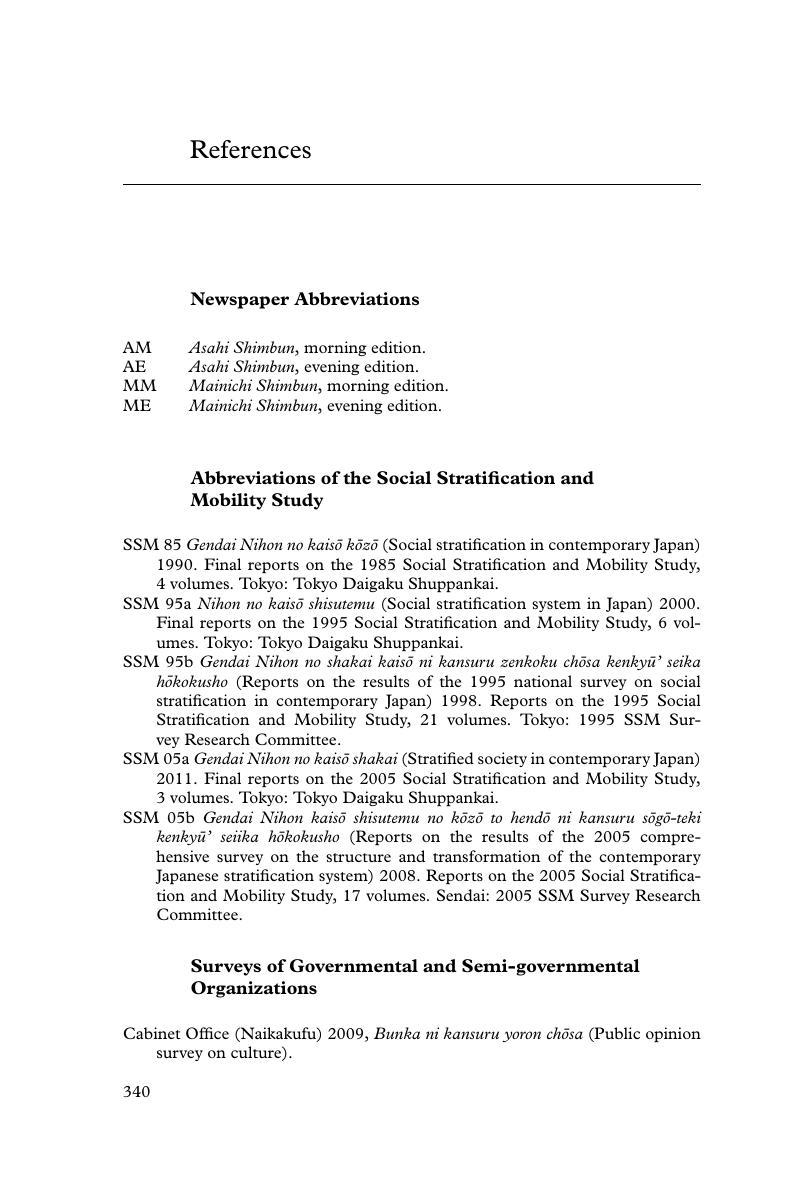Book contents
- Frontmatter
- Contents
- List of figures
- List of tables
- Preface to the fourth edition
- Map of Japan
- 1 The Japan Phenomenon and the Social Sciences
- 2 Class and Stratification: An Overview
- 3 Geographical and Generational Variations
- 4 Forms of Work in Cultural Capitalism
- 5 Diversity and Unity in Education
- 6 Gender Stratification and the Family System
- 7 ‘Japaneseness’, Ethnicity, and Minority Groups
- 8 Collusion and Competition in the Establishment
- 9 Popular Culture and Everyday Life
- 10 Civil Society and Friendly Authoritarianism
- References
- Index
- References
References
- Frontmatter
- Contents
- List of figures
- List of tables
- Preface to the fourth edition
- Map of Japan
- 1 The Japan Phenomenon and the Social Sciences
- 2 Class and Stratification: An Overview
- 3 Geographical and Generational Variations
- 4 Forms of Work in Cultural Capitalism
- 5 Diversity and Unity in Education
- 6 Gender Stratification and the Family System
- 7 ‘Japaneseness’, Ethnicity, and Minority Groups
- 8 Collusion and Competition in the Establishment
- 9 Popular Culture and Everyday Life
- 10 Civil Society and Friendly Authoritarianism
- References
- Index
- References
Summary

- Type
- Chapter
- Information
- An Introduction to Japanese Society , pp. 340 - 365Publisher: Cambridge University PressPrint publication year: 2014



